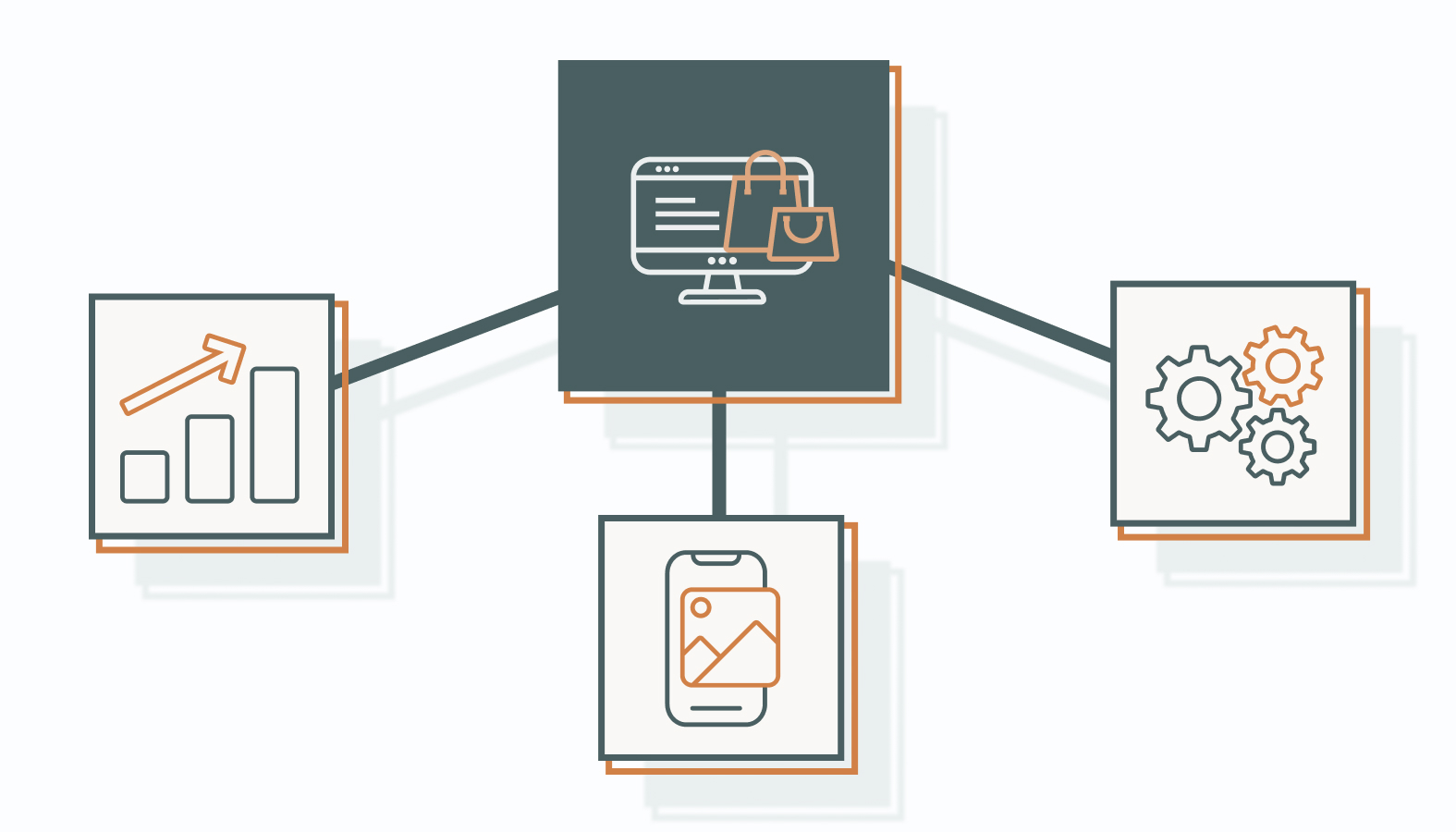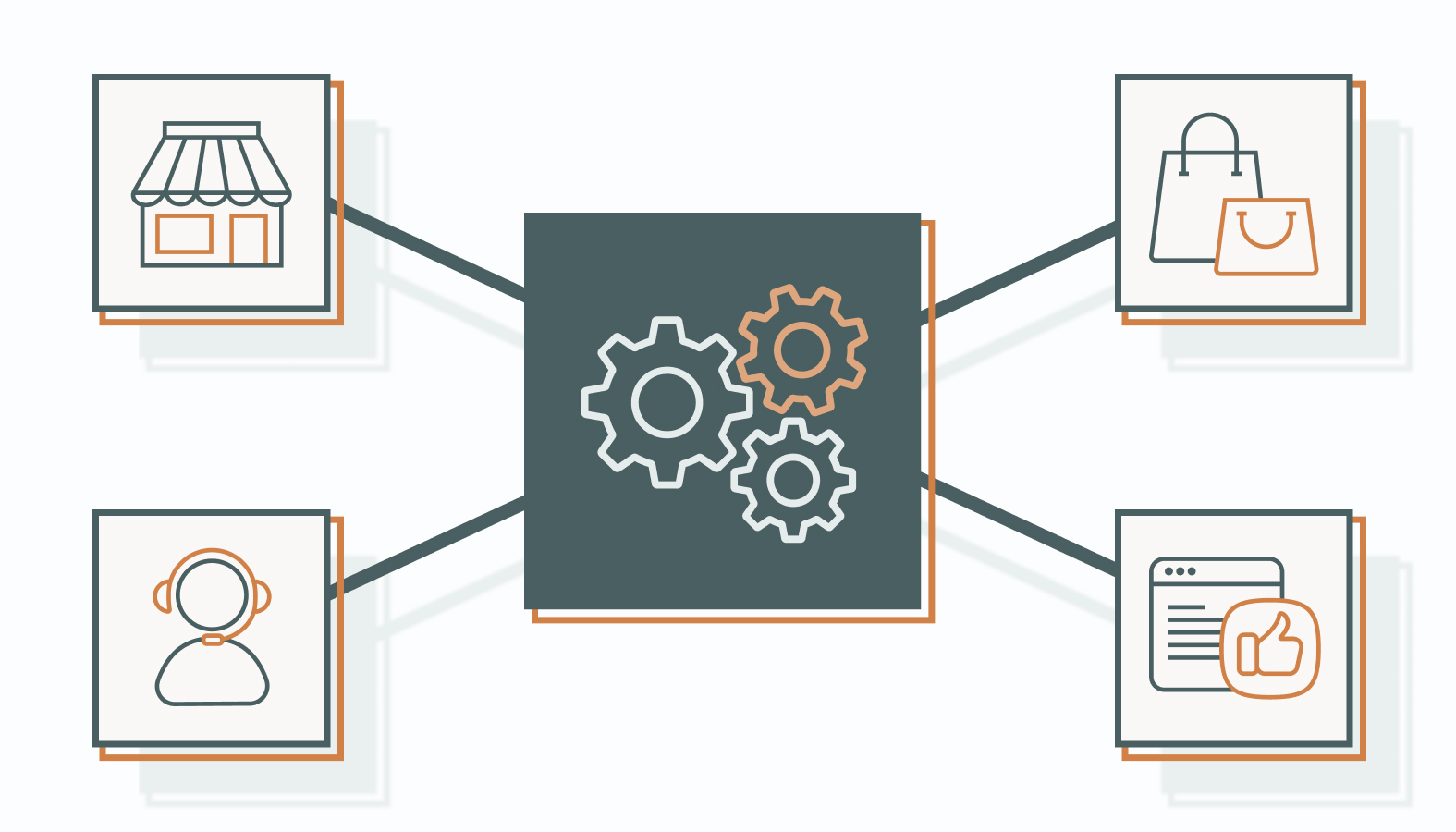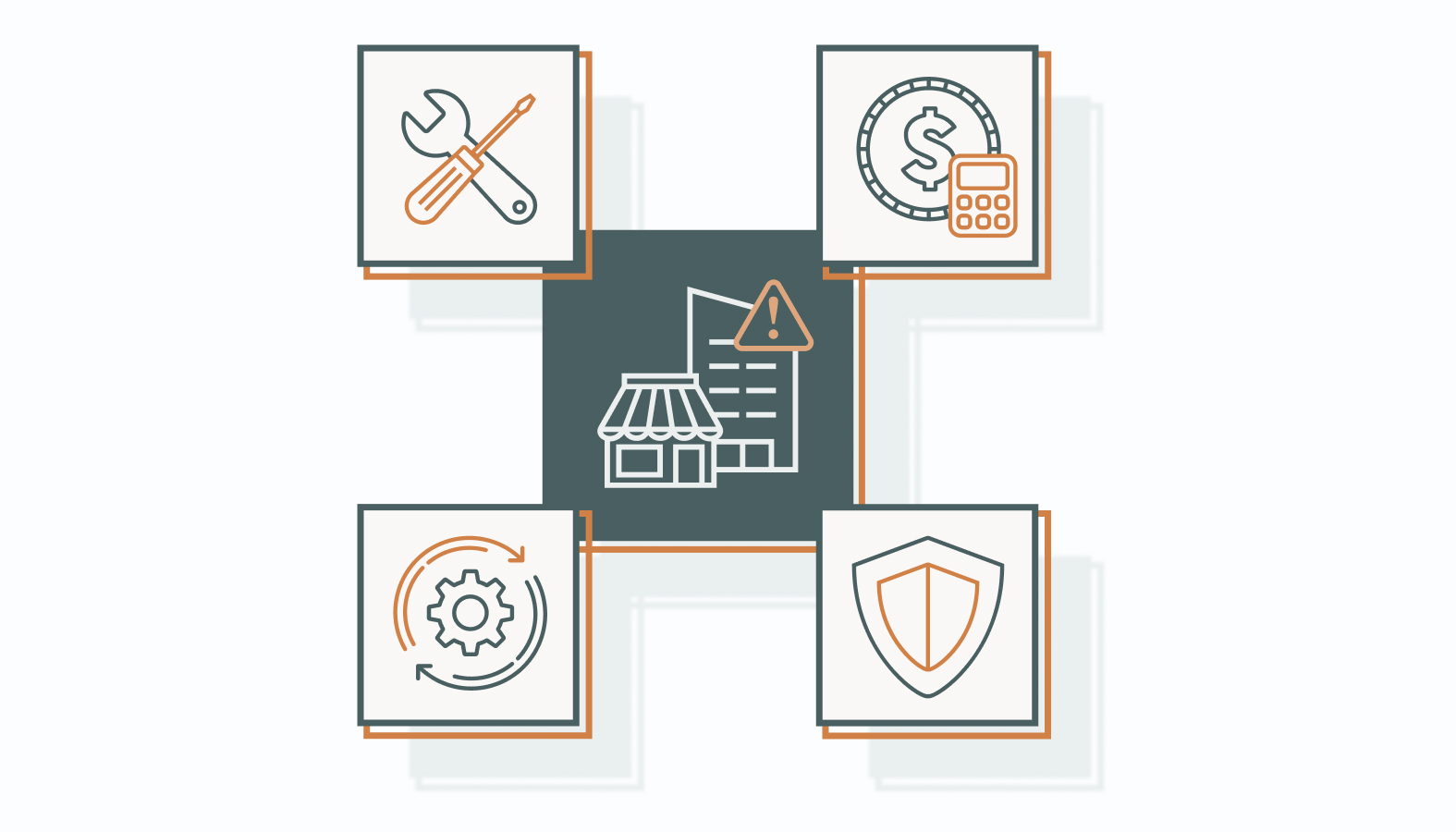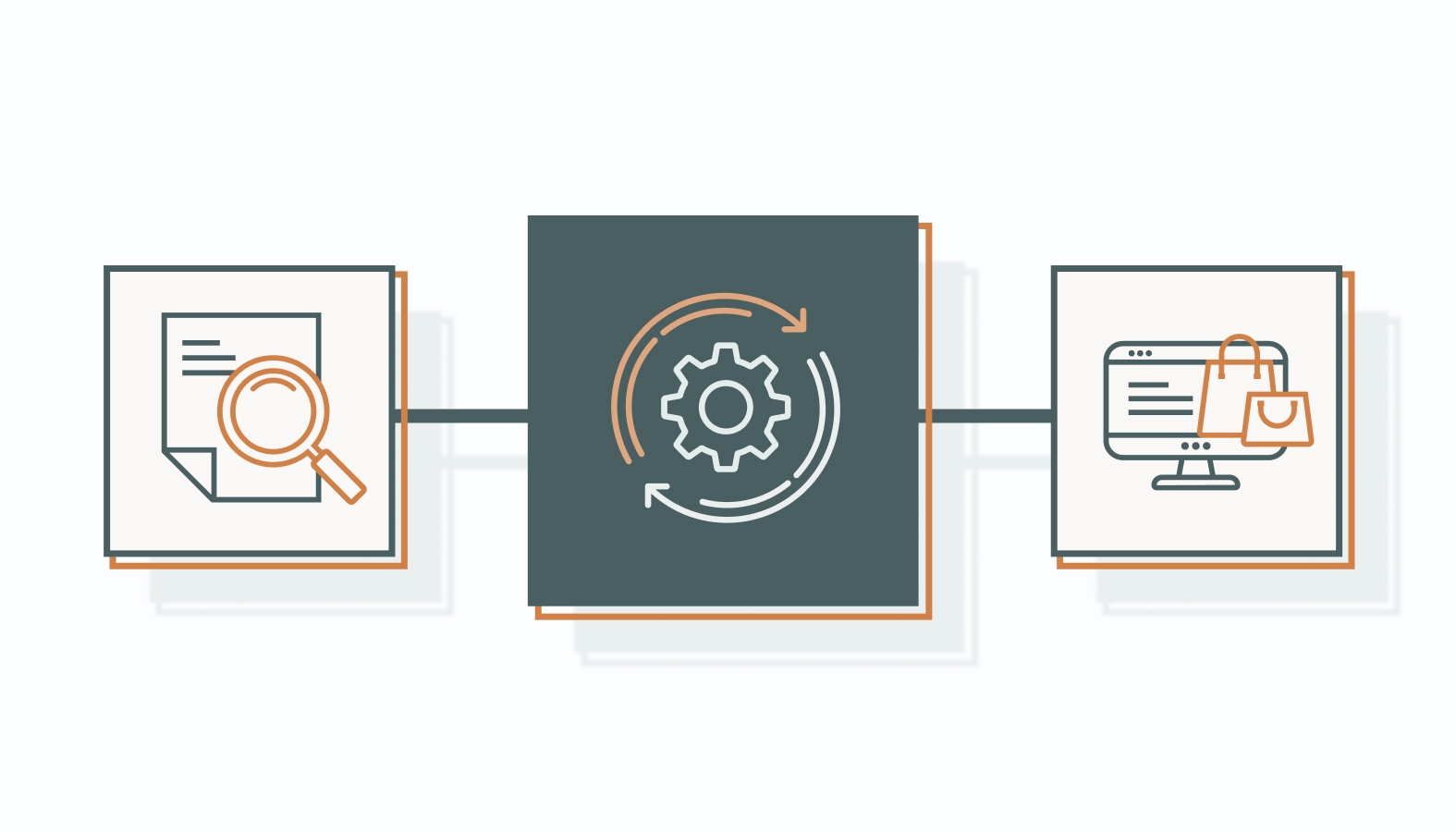Selling online comes with endless moving parts: orders, payments, shipping, customer service, marketing campaigns, and more. Trying to manage it all manually is a recipe for burnout. That’s why so many businesses are turning to an ecommerce automation system.
Automation is about saving time, yes, but it’s also about reducing costly mistakes, improving consistency, and giving customers a smoother experience.
The problem is, many companies hesitate because they worry about complexity, costs, or the risk of losing that personal touch.
This guide shows you exactly how automation fits into modern ecommerce. You’ll learn where it can make the biggest impact, what challenges to watch out for, and how to choose the right software to match your goals.
Stick around to see how automation can stop being intimidating and start being your most reliable partner in growth.
What is Ecommerce Automation?
Today’s ecommerce landscape rewards speed and punishes inefficiency. Automation is how businesses keep up, scale, and stay competitive.
At its core, ecommerce automation is about removing repetitive, manual work and replacing it with smart, technology-driven processes. This shift frees your team to focus on growth, strategy, and the customer experience.
The Core Concept
Ecommerce automation uses technology to streamline day-to-day operations within an ecommerce business. Think of it as the connective tissue that keeps your systems working in sync.
It often includes:
- AI & Machine Learning – powering smarter product recommendations and demand forecasting.
- Robotic Process Automation (RPA) – eliminating repetitive data entry or order-processing tasks.
- Integrated Tools & Platforms – linking inventory, fulfillment, marketing, and customer service so they “talk” to each other seamlessly.
The result? Fewer errors, faster operations, and a stronger bottom line.
The Significance of Automation
Automation isn’t just about keeping up with technology. It’s about transforming how your business runs.
Key benefits include:
- Efficiency at Scale – reducing bottlenecks and wasted hours.
- Cost Savings – cutting down on overhead by minimizing manual labor.
- Accuracy – fewer mistakes in orders, inventory, or customer data.
- Personalization – delivering smarter, more tailored customer experiences.
Major players like Amazon and Shopify have mastered this, using automation to optimize supply chains, streamline fulfillment, and personalize customer journeys at scale.
Don’t think of ecommerce automation as a ‘someday option.’ It’s already a strategic necessity. The companies using it aren’t just keeping up — they’re setting the pace. Your business has the chance to do the same by taking full advantage of it. Automation gives you the breathing room to focus on what matters most: innovating, scaling, and building loyalty.
Benefits of Ecommerce Automation
Ecommerce automation isn’t a shiny extra. It’s a lever that reshapes how businesses run and compete. Done right, it sharpens operations, levels up customer experiences, and keeps performance consistent across the board.
Here’s what it delivers:
1. Boost Operational Efficiency
Think of automation as your team’s force multiplier.
- Repetitive tasks offloaded: Order processing, inventory tracking, and data entry get handled without human drag.
- Resources redirected: Free up your best people to focus on strategy and growth instead of spreadsheets.
- Smarter systems: Automated inventory tools adjust stock in real time, and email platforms segment and target customers without manual lift.
The result? Lower labor costs, faster turnaround, and more room to innovate.
2. Elevate the Customer Experience
Great customer experiences don’t happen by chance. They’re designed, tested, and scaled — and automation is what makes that level of consistency possible.
Through tools like chatbots and AI-driven recommendation engines, businesses can offer:
- 24/7 engagement: Chatbots provide instant answers and resolve issues before frustration builds.
- Personalized journeys: Recommendation engines and CRM automation tailor communication so every customer feels recognized.
- Frictionless service: From checkout to support, consistency keeps customers coming back.
The real win? Customers walk away feeling connected to your brand. And that connection is what turns one-time buyers into repeat customers, and repeat customers into lifelong advocates.
3. Reduce Errors and Boost Consistency
Humans are brilliant — but not always consistent. Automation fixes that.
- Error-proof operations: Predefined rules eliminate mistakes in billing, order fulfillment, and data management.
- On-time accuracy: Invoices are generated correctly, every time, improving cash flow.
- Reliable quality: Automated checks catch issues before products ever reach the customer.
Consistency isn’t just operational hygiene. It’s what makes customers trust you to deliver the same quality experience every time. And when that trust compounds, it becomes brand equity — the kind that competitors can’t copy or undercut.
Where to Use Ecommerce Automation
Not every part of your business needs automation. But the right ones? They unlock efficiency, reduce headaches, and directly impact revenue.
Below are the four areas where automation consistently pays off.
Inventory Management
Your inventory is the backbone of ecommerce. Get it wrong, and everything downstream suffers.
Here’s how automation fixes that:
- Real-time tracking: Always know what’s in stock, what’s running low, and what’s moving fastest.
- Smart reordering: Systems can auto-trigger purchase orders when stock dips below a set threshold.
- Cost control: No more overstocking products that sit in storage and drain cash flow.
Example: Zara uses automated inventory systems to sync demand with production. That agility keeps shelves stocked with what customers want, while minimizing waste and storage costs.
Order Fulfillment
Fast, accurate delivery isn’t just a perk — it’s a customer expectation.
Automation streamlines the journey from “Buy Now” to “Package Delivered”:
- Automated warehousing: Goods move seamlessly from storage to packing without bottlenecks.
- Robotic picking systems: Robots handle repetitive picking tasks faster (and with fewer mistakes) than humans.
- Integrated shipping labels: Orders flow directly into carriers with zero manual input.
Example: Amazon’s warehouse robotics cut picking times dramatically, allowing same-day and even same-hour deliveries. The result: higher throughput, fewer errors, and happier customers who come back for repeat orders.
Customer Support
Today’s customers expect answers now, not “within 24–48 hours.” Automation makes that possible without burning out your support team.
- Chatbots for FAQs: Instantly resolve routine questions like “Where’s my order?”
- 24/7 coverage: Automation works while your human team sleeps.
- Seamless escalation: Bots handle the easy stuff, while complex cases get routed directly to human agents.
Example: H&M and Sephora both use chatbots to give shoppers personalized, instant assistance — whether it’s tracking an order, finding a product, or answering style questions. Faster responses = happier customers + more sales.
Marketing and Sales
Marketing without automation relies too heavily on broad strokes. With automation, every interaction becomes precise, timely, and scalable.
- Personalized campaigns: Data-driven tools segment customers and deliver offers they’ll actually care about.
- Email automation: Send the right message at the right time (welcome flows, cart reminders, win-back campaigns).
- Smart recommendations: AI-powered engines suggest products based on browsing or purchase history.
Example: Coca-Cola uses marketing automation to tailor content to different customer segments, boosting engagement and sales across multiple markets.
The Big Picture
Automation isn’t about replacing people. It’s about freeing them up to focus where they’re most valuable — strategy, creativity, and relationship-building.
When you prioritize automation in inventory, fulfillment, support, and marketing, you create a business that runs smoother, delivers consistent experiences, and scales without chaos — turning efficiency into lasting competitive advantage.
Common Ecommerce Automation Challenges and Solutions
Implementing ecommerce automation is transformative — but it’s not always smooth sailing. Integration headaches, budget constraints, and security risks can derail progress if you’re not prepared.
The good news? Every challenge has a practical solution. Here’s how smart businesses stay ahead:
Integration Hurdles
The challenge: New automation tools don’t always “play nice” with legacy systems. The result? Data silos, broken workflows, and frustrated teams.
The solution:
- Audit your stack first. Map out all current systems and identify where automation will add the most value.
- Use middleware or APIs. Tools like Zapier, MuleSoft, or custom APIs can bridge gaps and keep data flowing.
- Choose partners wisely. Work with vendors who offer strong customer support and customizable integration options.
Pro tip: Don’t just look at today’s needs. Pick solutions that can scale as your operations grow.
Example: A mid-sized fashion retailer streamlined its order processing by connecting its Shopify store, ERP system, and 3PL provider through middleware. The result? Real-time inventory sync and faster fulfillment without replacing core systems.
Cost and Resource Allocation
The challenge: Automation can be expensive upfront. Without clear priorities, businesses risk over-investing in shiny tools that don’t move the needle.
The solution:
- Start with high-impact areas. Automate what delivers the fastest ROI (e.g., abandoned cart emails or invoice processing).
- Run a cost-benefit analysis. Every new workflow should have a measurable impact on revenue, cost savings, or customer experience.
- Think scalable. Cloud-based or pay-as-you-go models reduce upfront costs while allowing you to expand over time.
- Leverage open-source. Open-source platforms (like Odoo for ERP) can reduce licensing fees without sacrificing capability.
Example: Instead of automating its entire support operation, a SaaS company first automated ticket routing and FAQ responses. The small step cut response times in half, freed up agents for complex issues, and funded further automation projects.
Balancing Customization and Flexibility
The challenge: Too much automation feels robotic. Too little, and you lose efficiency. Customers expect personalization even when processes are standardized.
The solution:
- Design for overrides. Allow staff to step in when personal attention matters (e.g., VIP customers or escalated cases).
- Adopt modular automation. Build flexible workflows that can be tweaked without overhauling your entire system.
- Blend personalization with scale. Use CRM-driven automation to send tailored offers, but always leave room for human nuance.
Example: A subscription box company automated its billing and shipping, but kept manual control over gifting and customer loyalty perks. The result: efficient operations without sacrificing the personal touches that build long-term loyalty.
Security Concerns
The challenge: With more data flowing through automated systems, security risks grow. Breaches or compliance slip-ups can shatter customer trust overnight.
The solution:
- Harden your defenses. Encryption, firewalls, and multi-factor authentication should be non-negotiable.
- Stay compliant. GDPR, CCPA, and other regulations aren’t just legal checkboxes — they’re trust signals for customers.
- Audit regularly. Run scheduled penetration tests and system audits to catch weaknesses before attackers do.
- Bring in experts. Collaborating with cybersecurity specialists ensures your automation stack doesn’t become your weakest link.
Example: After expanding into the EU, a U.S.-based ecommerce brand worked with a cybersecurity firm to align its automation workflows with GDPR requirements. Not only did it avoid penalties, but customer trust scores rose because of visible data transparency.
Automation challenges aren’t roadblocks — they’re checkpoints. By tackling integration, costs, flexibility, and security head-on, you ensure your systems run smarter, your team stays focused, and your customers get the seamless experience they expect.
Handled well, automation streamlines operations and becomes a competitive moat around your business.
How to Choose Ecommerce Automation Software
Choosing the right ecommerce automation software isn’t just about ticking boxes on a feature list. The wrong choice can create bottlenecks and wasted spend. The right one becomes a growth engine.
Here’s a step-by-step framework to evaluate and select software that fits your business today and scales with you tomorrow.
1) Assess Your Business Requirements
Before you start shopping, define what success looks like. Automation only works when it solves real problems, so zero in on the areas that move the needle.
Ask yourself:
-
- Which processes eat up the most time and resources? (Order processing? Inventory reconciliation? Customer support tickets?)
- Which workflows directly impact customer satisfaction? (Fulfillment speed? Personalized engagement? Returns management?)
- Which tasks are error-prone and would benefit from consistency?
Pro tip: Use structured analysis tools like:
- SWOT (Strengths, Weaknesses, Opportunities, Threats) Analysis – Surface gaps, risks, and opportunities in current operations.
- Business Process Mapping (BPMN) – Visualize workflows to spot inefficiencies and redundancies.
This exercise gives you a clear, prioritized automation roadmap. Without it, you’re shopping blind.
2) Analyze Software Alternatives
Once you know what you need, evaluate solutions against criteria that matter most to ecommerce businesses:
- Functionality: Does it automate the exact processes you prioritized?
- Scalability: Can it handle 10x order volume without breaking?
- Integration: Will it play nicely with your existing stack (ERP, CRM, shipping tools, marketplace platforms)?
- Ease of Use: Will your team adopt it quickly, or will it sit unused because training is a nightmare?
- Cost Model: Is pricing transparent and aligned with your growth stage, or will you be penalized the minute you scale?
Popular ecommerce automation tools include:
- Shopify Flow: Native to Shopify, perfect for automating repetitive store management tasks like tagging high-value customers or triggering low-stock alerts.
- Zapier: A universal connector that ties apps together, ideal if you rely on a diverse toolset and want workflows without custom code.
- HubSpot: Strong choice if you need marketing automation, customer segmentation, and CRM baked into one platform.
3) Match Capabilities to Goals
Don’t just ask, “What can this tool do?” Ask, “How will this tool help us hit our revenue, retention, or efficiency targets?”
For example:
- If your goal is faster order turnaround, prioritize fulfillment and shipping automation.
- If your goal is higher lifetime value (LTV), lean into customer engagement and marketing automation tools.
- If your goal is error-free operations at scale, focus on inventory syncs, real-time data sharing, and systems that reduce manual intervention.
Automation software is an investment in scalability, not a quick fix. By mapping business requirements, comparing alternatives on meaningful criteria, and connecting software capabilities back to your strategic goals, you make a decision that pays off long term in efficiency, customer loyalty, and competitive edge.
Automation as a Growth Engine for Ecommerce
Ecommerce doesn’t slow down and neither should you. The businesses that thrive are the ones that trade manual bottlenecks for automated systems that scale. From inventory and fulfillment to support and marketing, automation is an efficiency play in delivering consistent, high-quality experiences at scale.
Choosing the right tools and putting them to work strategically means fewer errors, lower costs, and happier customers. More importantly, it gives your team the bandwidth to focus on growth, innovation, and building loyalty.
The takeaway? Ecommerce automation isn’t optional. It’s your competitive edge and the sooner you build it, the harder it becomes for competitors to catch up.
Ready to Automate Smarter, Not Harder?
Automation isn’t about replacing the human touch; it’s about amplifying it. When systems handle the busywork, your team gets to focus on strategy, creativity, and customer relationships. That’s how you scale without losing what makes your brand unique.
If you’re serious about cutting the noise and building an automation system that actually drives growth, we should talk. Our team works with ecommerce brands to design automation strategies that are practical, scalable, and aligned with real business goals — not just shiny software features.
Schedule a candid conversation with one of our ecommerce automation experts. No pressure, no pitch — just clarity on how automation can move the needle for your business.










